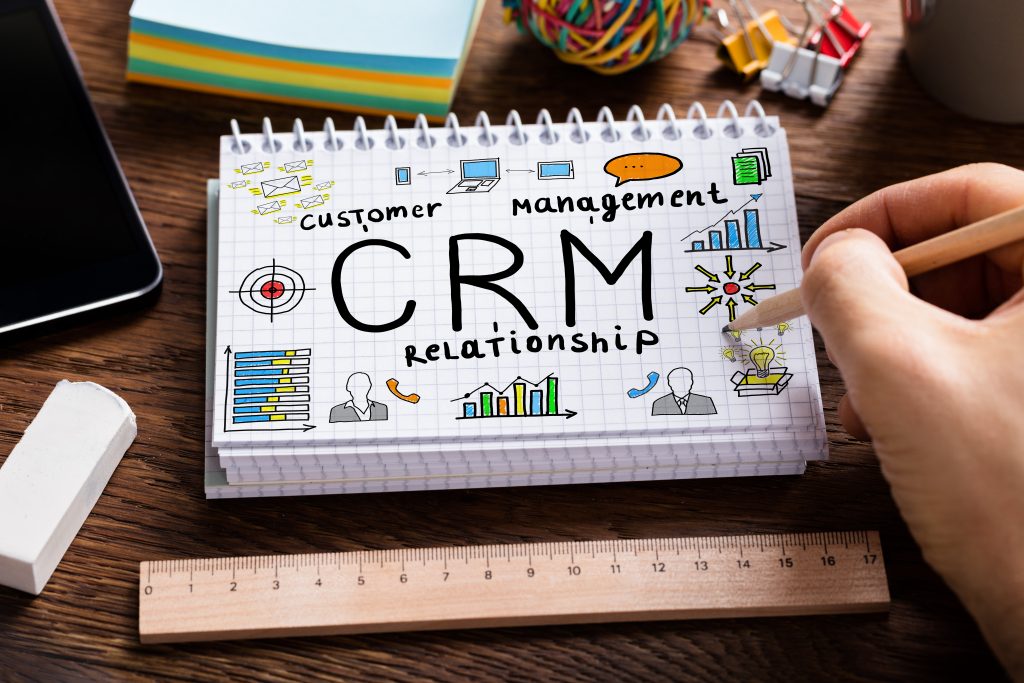Are You Getting the Most Out of Your CRM System?
By Prethiba Esvary, Marketing and Communications Executive, Lava Protocols
My mother had had it with Android phones and decided to switch to Apple!

So, she purchased the iPhone 5 several years back. She bought it purely because it was 1) premium (and she could afford it) 2) it stood out from android phones because of its craftsmanship and finally, 3) ease of use.
That’s basically it.
But what she probably didn’t realise is that she was paying a premium price for much more than just the above. In actuality, she was also getting a phone with high quality hardware and software, better security, a smooth operating system (iOS), and better quality applications, just to name a few.
Okay, this is not an article promoting iPhones. What I’m trying to get at is that she probably isn’t fully maximising the function of her iPhone and is therefore not reaping its full benefits. Which is a waste of RM4K, in my books.
This applies to any technology we use. Let’s take the example of a CRM system like Salesforce. Salesforce is a premium and mature CRM system with a full suite of customer relationship management functions. If you’re not maximising all of its features, you’re not getting a high ROI.
Someone once said this: “You don’t just drive a Ferrari to the grocery store and back. A car like that has so much more to offer and deserves to do more!”
Related: How Salesforce’s Cloud Differs From Other Clouds
A question you should ask is are you maximising the use of your CRM system?
Here are a few things to do to take your CRM implementation further:
1. Sync all your systems
Sales, marketing, and customer service are all interconnected. If you’re using a CRM system merely for sales automation, then you’re missing out. Why? The sales data that currently sits in your system is incredibly valuable to the marketing department. Based on which stage of the buying cycle the customer is in, marketing can use that data to send out targeted campaigns.
As for customer service, getting access to customer history, transactions, etc. are key to providing high quality support. If you’re a Salesforce user, you may want to consider looking at its other products. The beauty of Salesforce is that each product is connected to the other, and everything sits on one single platform. That way, data updated by a sales rep, can also be viewed by a customer service rep in real-time. Amazing, isn’t it?
2. Connect it to social media platforms
Wouldn’t you want to know what your customers are saying about you or a competitor? Listen to what they are saying on their preferred channel of communication.
In an article by CIO, David Neuman, social media manager of a digital marketing agency was quoted saying: “By capturing [customer] conversations in real-time, brands can quickly reach out and resolve issue[s] ASAP.”
Anthony Smith, founder and CEO of Insightly, a SaaS CRM application said: “[Integrating your CRM to social media platforms] allows users to insert a new contact’s email address and detect virtually every social media profile related to the email address. With access to these social media profiles, companies can see where their leads and contacts frequently post.”

3. Get feedback from employees who are using it
Have regular chats with employees who are using the CRM system. Ask them what they like and dislike about the system, and what are the gaps they observe in the system.
Alan Baker, president and chief consultant of consulting firm Spitfire Innovations said: “The design of [a] CRM application can always be improved.
“Solicit ideas for improvement from internal and external users and then act on the ideas.”
4. On top of training, pay for change management
One common issue with Malaysian companies using CRM systems is they don’t spend as much time and money on change management.
It’s an accepted fact that some people don’t like, or even, reject change. This is why it’s crucial to facilitate their adoption process. Understanding the use and functionality of the system is one thing, but seeing how it fits into their daily activities, how it simplifies their job, and making them understand the long-term ROI, are key to getting their buy-in.
Come up with SMART milestones and ensure that this is communicated to employees and teams who are using the system. The last thing you need is a CRM implementation failure.
5. Facilitate the user adoption process
There a host of things you can do internally to continuously educate employees about your CRM system. Ambassadors are key for this. Appoint employees or leaders who get on well with others to turn employees’ learning experience into a fun and engaging one.
They can regularly run mini activities together with the marketing department to test employees on their CRM knowledge, and to reward them as they progress along their learning and adoption journey.
6. Just gotta keep learning
Continuous learning is key. Even if you have been an Oracle, SAP, or Salesforce user for years, there are always updates and new features being added to the system. If you are looking to upskill as an admin, developer, or business analyst, look for good learning modules which provide online courses and projects for you to complete at your own pace.
Salesforce Trailhead is an example of a fun and engaging way to learn, upskill, and get certified.
This is a testimonial from one of Lava Protocols’ employees about the time she had to switch from one marketing tool to using Salesforce Pardot:
“The challenges faced was mostly experienced when the team was trying to figure out what data we wanted to incorporate from the previous tool and mapping it accordingly. It was a lot of strategising and trying to understand how differently Pardot functioned. The good thing about Pardot and on a more general level is that, Salesforce has a very extensive knowledge base. From video tutorials, to articles, to guided learning modules, webinars and community groups, the team and I made sure to soak up as much as we could and work our way through the tool with these information at hand.
“A team member and I decided to rise to the challenge and we got ourselves certified as Pardot Specialists. The whole process of obtaining the certificate definitely pushed us further and faster in understanding Pardot.”

7. Get the advice and help of certified CRM experts
Sometimes all you need is some expert advice. Get a certified Salesforce expert from Lava Protocols who is able to not just listen but to truly understand your business issues and needs.
At Lava Protocols, we get a lot of customers asking us to advise them on which technologies best suit their needs, how to integrate them into their business processes, and how to get everyone on board with the solution.
Our experience spans across various industries. Our top industries include aviation, tourism, education, IT, service, and government.
Some of the top companies we have worked with include Taylor’s University, MAVCOM, MAB, Maxis, and Tourism Malaysia. See more of our clients here.
Email us at asklava@lavaprotocols.com or call +603 7885 9720 to speak to one of our consultants if you’d like to get the most out of your CRM.
Lava is a cloud service provider and an authorised Salesforce Partner in Malaysia. We have more than a decade of experience in cloud solutions which includes marketing automation, CRM implementation, change management, and consultation. We pride ourselves in not just being a CRM partner but in also understanding the needs of our customers and taking their business to the next level.

